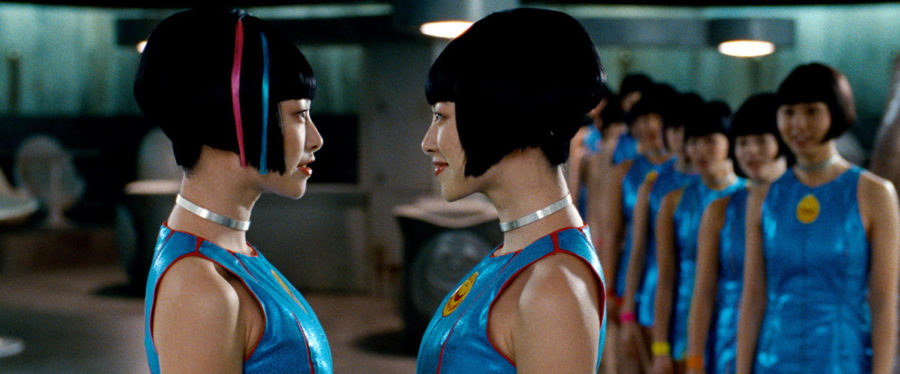Cloud Atlas begins with a hodgepodge of images that is nothing short of visual apotheosis. They each serve as a window into one of the six stories that compose the movie’s whole: a man with a bowl of teeth on a Polynesian island; a brooding young man escaping from a hotel window; a woman grimly driving down a freeway; the huge, comical, bespectacled eyes of an elderly man peering over his typewriter; a room of steel and chrome imprisoning an almost inhuman-looking woman; a man with guttural speech and matted hair among the tangled scenery of an island forest. From the outset, it is clear that the movie is going to be a stunner—as it should be, considering its $102 million budget. Less clear, however, is where on earth all these stories are going.
This proves to be a difficult question to answer; the movie is based on the eponymous novel written by David Mitchell, which has a scope so vast and a premise so ambitious that fitting all of it in under a three-hour run time seemed like a near impossible feat. Yet directors Tom Tykwer and Wachowski siblings (of Matrix fame) rose to the challenge admirably, working with a rich ensemble of actors to flesh out six stories’ worth of characters. As a result, each character is sharp, compelling, and fully realized, regardless of how little screen time he or she receives.
Halle Berry, Jim Sturgess, Ben Whishaw, Tom Hanks, Bae Doona, and Jim Broadbent each take turns narrating the movie: Jim Sturgess as Adam Ewing, a lawyer from the imperialist era traveling from the Polynesian Islands, Ben Whishaw as young, brooding musical prodigy Robert Frobisher, Halle Berry as the dedicated journalist Luisa Rey, Jim Broadbent as the debt-ridden, small-time book editor Timothy Cavendish, Bae Doona as a manufactured human being named Sonmi-451 who has attained thoughts of her own, and Tom Hanks as Zachry, a Valleysman living in a post-apocalyptic future. The main actors also each play several roles. For example, Halle Berry is in five of the six stories with major roles in at least two, and—with impressive cosmetic changes—Sturgess doubles as a Korean commander and Sonmi-451’s love interest. It is a testament to each of their performances and to the efforts of the directors and designers that I didn’t realize any of the characters were being played by the same actors.
Despite the sharp acting and gorgeous cinematography, Cloud Atlas fails as an adaptation of a novel. With contrived romances and subplots not in the book as well as characters and major developmental arcs left out of the movie, readers of the novel hoping for a faithful adaptation will be disappointed. The movie ending noticeably differs from how Mitchell ended the book and seemed to rather miss the point, instead copping out with an “all’s well that ends well.”
On the other hand, the links between each story are much more explicit for the movie-going audience: The matching birthmarks that each main character has are emphasized, and the movie shows how one story flows into another; for example, The Ghastly Ordeal of Timothy Cavendish is found as an ages-old movie by Sonmi-451. The film version of Cloud Atlas played the sentimental romantic angle much more than the novel did, but it still has all the elements of adventure, mystery, and thriller that would make the film appealing to just about anyone.
Ultimately, Cloud Atlas makes a heroic effort to encompass the huge scope of Mitchell’s over 500-page novel, but it knows its own limits and doesn’t try to fit what can only be expressed through the pages of a novel on a movie screen. The movie can stand on its own. Regardless of how it matched up to the book, the subtly more optimistic film adaptation expertly crafted each individual plot line and is moving in its own right; therefore, it is worthy of admiration.
Cloud Atlas, directeted Lana Wachowski, Tom Tykwer, Andy Wachowski, now playing at AMC River East









